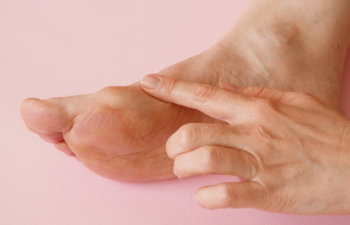Do You Have Bunions? Causes, Symptoms and Treatments for Bunions

Bunions are a common foot condition that affects many individuals. They occur as a result of the big toe being pushed towards the other toes, causing a bony bump to form on the inside of the foot. Bunions can become painful and result in changes to your lifestyle. If you think you have a bunion, here is what you need to know about causes, symptoms, treatments, and preventive techniques.
Causes of Bunions
Bunions are often caused by wearing tight shoes or high heels that push the toes together. A family history of the condition, arthritis, or other foot conditions can also cause bunions. Individuals with flat feet or low arches are at a higher risk of developing bunions.
Bunion Symptoms
The most noticeable symptom of a bunion is a bony bump on the inside of the foot by the big toe joint. Other symptoms may include:
- Pain or soreness around the big toe
- Swelling or redness around the big toe joint
- Difficulty moving the big toe
- Corns or calluses on the affected area
- Big toe turns inward toward the adjacent toe
- Shoes may not fit correctly
Treatment Options for Bunions
Depending on the severity of the condition, there are several treatments for bunions. In mild cases, changing footwear to shoes with a wider toe box or using shoe inserts may provide relief. Over-the-counter pain medications may also help alleviate discomfort. However, bunions are a permanent condition; if severe, more advanced treatments may be required.
A podiatrist may recommend a custom orthotic device to support the foot or a splint to straighten the toe for more severe cases. In some cases, surgery may be necessary to correct the toe’s alignment and remove the bony bump. Stuart J. Mogul, DPM, FACFAS, is an internationally recognized podiatrist and foot surgical specialist who offers bilateral bunion surgery, which can reduce healing and recovery time.
Preventing Bunions
To prevent bunions from developing, it is important to wear comfortable shoes that fit properly and have a wide toe box. Avoid wearing high heels or shoes that are too tight. Stretching exercises and wearing shoe inserts can also help prevent the development of bunions. If you have arthritis or a family history of bunions, you may want to consider these preventive measures to help reduce your risk of bunions.
Bunions can be a painful and uncomfortable foot condition, especially for athletes, dancers or anyone with a career involving long periods on their feet. However, with proper treatment and prevention strategies, individuals can manage the symptoms and prevent further damage to the foot. For those with severe bunions or a profession that requires footwork, bunion surgery may be the best option. To schedule a consultation with Dr. Mogul, contact his office in NYC. Our team can schedule a bunion treatment consultation with Dr. Mogul, one of the top podiatrists in the world.
Posted on behalf of
1111 Park Avenue Suite 1B
New York, NY 10128
Phone: (212) 769-0066
Email: contact@footsurgerycenternyc.com
Monday - Friday 8:30 AM – 6:00 PM
